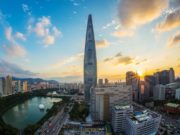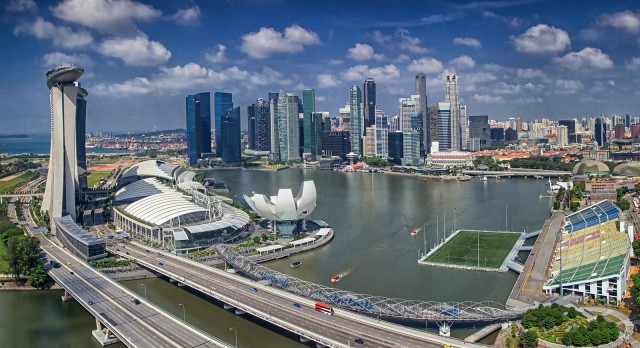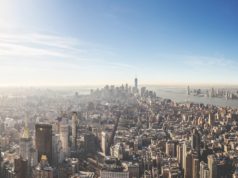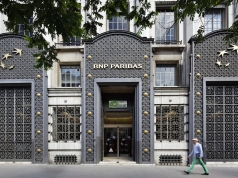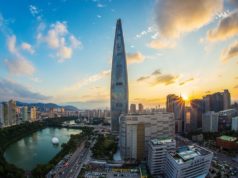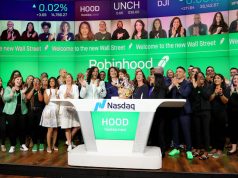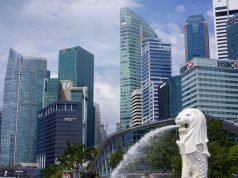Singapore Temasek Portfolio Value at $287 Billion with 1 Year Shareholder Return of -7% & +14% Since 1974, 46% of Portfolio are Direct Investments, 10% Valued at S$79 Billion via Partnerships Including Private Equity, Private Credit, Public Market Investing & Capital Solutions
13th July 2023 | Hong Kong
Singapore state-owned investment company Temasek portfolio value is at $287 billion (S$382 billion) at the end of Q1 2023 (31/3/23), with total shareholder return of -7% in 1 year (20 Year: +9%, 10 Year: +6%) and +14% since inception in 1974 (compounded returns in USD). In 2022, Temasek portfolio value was higher at $297 billion (S$403 billion), with total shareholder return of +5.07% in 1 year. In 2022, Temasek invested S$31 billion and divested S$27 billion (net investment of S$4 billion), with key portfolios in Asia (63%), Singapore (28%), China (22%) and the Americas (21%). 46% of Temasek portfolio are via global direct investments, and 10% of portfolio through partnerships (S$79 billion), including private equity, private credit, public market investing, and capital solutions. 53% of Temasek portfolio are in unlisted assets. Temasek also reported dividend income of S$11 billion and outstanding debt of S$22 billion (6% of NPV) and 21% of liquid assets. On Temasek Partnership: “Our Partnership Engine consists of Assets Under Management (AUM) businesses that have about S$79 billion of AUM and provide products like private equity, private credit, public market investing, and capital solutions. EvolutionX Debt Capital, a growth stage debt financing platform jointly established by Temasek and DBS, has continued to provide financing to growth stage technology-enabled companies across Asia, with a focus on China, India, and Southeast Asia. Our existing platforms such as Azalea Investment Management, Fullerton Fund Management, InnoVen Capital, Pavilion Capital, Vertex Ventures, and SeaTown Holdings International have continued to grow their businesses in an increasingly competitive environment.” See below for full report by Temasek:
“ Singapore Temasek Portfolio Value at $287 Billion with 1 Year Shareholder Return of -7% & +14% Since 1974, 46% of Portfolio are Direct Investments, 10% Valued at S$79 Billion via Partnerships Including Private Equity, Private Credit, Public Market Investing & Capital Solutions “
Lim Boon Heng, Chairman, Temasek Holdings: “We live in a volatile, uncertain, complex, and ambiguous world. 2022 has been the most challenging year for markets over the last decade. Against a backdrop of restrictive macro policy, lower growth, and a highly polarised geopolitical environment, the world is changing rapidly. Climate change remains an existential threat and time is running out to address it. Companies and governments can no longer sit on the sidelines. All of us must play an active role in solving shared global challenges as businesses cannot succeed unless societies thrive … …. Whilst the road ahead looks uncertain, we always embrace the mindset that every challenge brings with it new opportunities. By staying committed to doing well, doing right, doing good, and staying true to our Purpose, we are confident that Temasek will contribute to help every generation prosper.”
Dilhan Pillay, Executive Director & CEO of Temasek Holdings: “As we navigate an increasingly complex world, there are significant key challenges in the future. For the first time in decades, sticky inflation and tighter monetary conditions are manifesting themselves in significantly higher interest rates. The investment climate has become much more complex than what we have encountered since the Global Financial Crisis – the confluence of rising geopolitical tensions, the risk of decoupling amidst a rethinking of globalisation, the emergence of potentially restrictive, nationalistic and protectionistic policies amidst the proliferation of foreign investment regimes and the costs associated with energy security and energy transition portend lower global growth and lower real returns, and are challenging issues that investors will have to grapple with. The climate agenda has become more urgent. Businesses, governments, multilateral agencies, philanthropic organisations, investors, and societies need to collectively accelerate efforts to scale decarbonisation efforts and low carbon solutions, taking into account the immediate need for energy security and uplifting of communities where access and affordability present challenges which are insurmountable without external assistance and funding. While Industry 4.0 has boosted productivity, it has also led to rising inequality and the need to partner business transformation with workforce transformation. The advent of generative AI could magnify opportunities and bring with it challenges, with social, economic, and political consequences that will need to be addressed. We will need to ensure that there is sustainable and inclusive growth, so that this and future generations can prosper. In this era of volatility and uncertainty, we must anticipate not just the road ahead, but also what lies around the corner. To this end, in 2019, Temasek developed our T2030 strategy3 – a 10-year roadmap to guide our strategic planning, capability building, and institutional development initiatives. It guides us towards achieving our objective of sustainable value over the long term, in line with our Purpose. As we step up efforts to encourage decarbonisation across our portfolio and continue to invest in less carbon intensive businesses, we expect our portfolio emissions, in absolute and intensity terms, to decrease over time.” We also continued to focus on generating positive impact for underserved communities and catalysing the impact investing ecosystem, especially in Asia. We stepped up our investments in funds and companies that aim to generate a positive impact for underserved communities while achieving sustainable returns over the long term. Over the year, we committed to a new fund managed by our strategic partner LeapFrog Investments. We made our first direct investment in SarvaGram, a company that provides financial and productivity enhancing solutions to rural households in India.”
Rohit Sipahimalani, Temasek Chief Investment Officer: “We maintain a cautious investment stance and expect to invest at a moderated pace this financial year, given the challenging macroeconomic environment. However, given our strong liquidity position, we are ready to step up our investments in a market correction. Amidst an increasingly complex and volatile backdrop, we will stay focused on investing into opportunities that align with our long term structural trends, so as to build a resilient and forward looking portfolio, as part of our T2030 strategy.”
In the near term, Singapore faces slowing global growth and elevated inflation against a challenging macro backdrop. While China’s reopening could provide some support, the Singapore economy is geared more towards domestic demand in developed markets, which could experience a recession. Adding to the complexity, geopolitical tensions have risen, although Singapore could stand to benefit from diversification of supply chains around the region, both in the near and medium term.
Chia Song Hwee, Temasek Deputy CEO:“To navigate the complexities of the future, we recognise that we needed to build future-centric capabilities, and create enablers of innovation and growth across our ecosystem and the marketplace. Our Temasek Operating System was built as a suite of specialised, next-generation capabilities in AI, Blockchain, Cybersecurity, Data & Digital, and Sustainable Solutions, which we believe will be essential skill sets for the future and could differentiate us as a value-adding investor and shareholder.”
Png Chin Yee, Temasek Chief Financial Officer: “Despite the challenging environment, our portfolio has remained resilient as we reshaped our portfolio over the past decade to achieve sustainable returns over the long term. We have diversified beyond Singapore and Asia, into Europe and the Americas. Guided by our four structural trends Digitisation, Sustainable Living, Future of Consumption, and Longer Lifespans, we remain focused on identifying and capturing growth opportunities in these areas globally.”
About Temasek – Temasek is a global investment company with a net portfolio value of S$382 billion (US$287b, €264b, £232b, RMB1.98t)14 as at 31 March 2023. Our Purpose “So Every Generation Prospers” guides us to make a difference for today’s and future generations. Our Temasek Charter defines our three roles as an Investor, Institution, and Steward, and shapes our ethos to do well, do right, and do good. Temasek’s T2030 strategy guides us in our mandate to deliver sustainable value over the long term. It comprises four pillars: constructing a Resilient & Forward Looking Portfolio; embedding Sustainability at the Core of all that we do; building future-centric capabilities in our Temasek Operating System; and developing our Organisation, Talent & Capabilities to grow our people and teams for the future.
The T2030 strategy is underpinned by three foundational enablers: Catalytic Capital to bring about a better and more inclusive world for all; Networked Organisation to scale our impact; and a clear sense of Purpose, a Culture of teamwork, anchored by a strong set of Values. Temasek has overall corporate credit ratings of Aaa/AAA by rating agencies Moody’s Investors Service and S&P Global Ratings respectively. Headquartered in Singapore, we have 13 offices in 9 countries around the world: Beijing, Hanoi, Mumbai, Shanghai, Shenzhen, and Singapore in Asia; and London, Brussels, Paris, New York, San Francisco, Washington DC, and Mexico City outside Asia.
Singapore Temasek Portfolio Value at $287 Billion with 1 Year Shareholder Return of -7% & +14% Since 1974

11th July 2023 – Temasek reported a Net Portfolio Value (NPV) of S$382 billion1 and a net cash position for the financial year ended 31 March 2023. Our NPV was 1.8 times the value of our portfolio a decade ago.
The one-year Singapore dollar Total Shareholder Return (TSR)2 was -5.07%. Our Singapore portfolio companies remained resilient despite the drawdowns in the global markets and the challenging macro environment. However, our global direct investments saw a reversal of gains from the high valuations in the last two years, particularly in the technology, healthcare, and payments space, as valuations de-rated in the higher interest rate environment. Overall, our portfolio sustained its recovery from the lows during COVID-19, with a three-year TSR of 8%. Our TSR since inception in 1974 remained a robust 14%, while our 20-year and 10-year TSRs were 9% and 6%, respectively.
In the past year, we have encountered persistent inflation despite multiple rate hikes by central banks. Intensifying geopolitical tensions on several fronts such as US-China tensions and the Russia-Ukraine war, alongside rising nationalism and protectionism, have led to a marked shift from globalisation that has been the mainstay of global growth for the past 20 years. The confluence of these events, not seen in decades, has raised the cost of capital and weighed on capital flows. It also had an impact on the pace of energy transition, in the face of greater demand for energy security and resilience.
1) Moving Ahead with Purpose
Temasek’s T2030 strategy consists of four pillars – constructing a resilient and forward looking portfolio that can withstand exogeneous shocks and perform through market cycles; embedding sustainability at the core of all that we do, from the way we invest, to how we operate as an institution; building up future-centric capabilities in our Temasek Operating System to benefit our ecosystem and the marketplace; and developing our organisation and team with the right structure and capabilities to tackle the challenges of tomorrow, all in the pursuit of delivering sustainable value over the long term. For Temasek to succeed across these pillars, we cannot be a mere provider of financial capital – we must be a provider of catalytic capital to achieve sustainable returns across the financial, human, social, and natural arenas. As the problems of tomorrow are complex, we need to operate as a networked organisation, and harness the collective capabilities of our partners, portfolio companies, and other stakeholders to find and create the right solutions. Being anchored with a clear sense of purpose, underpinned by our values, culture, and behaviours, we aspire to help every generation thrive.
2) Performance and Portfolio Highlights
We slowed down our investment pace as we adopted a cautious approach amidst global uncertainties. We also saw deal activity slow down globally as liquidity tightened. During the year, Temasek invested S$31 billion and divested S$27 billion, resulting in a net investment of S$4 billion. Over the decade, we have invested S$326 billion and divested S$248 billion. We continued to invest into opportunities that are aligned with long term structural trends, and engaged our large Singapore portfolio companies to seek out opportunities of the future. We also reduced certain positions in the rebalancing of our portfolio, including where we see long term structural risks, in ensuring that we continue to maintain the strength of our balance sheet in the pursuit of a resilient and forward looking portfolio. Our portfolio remained anchored in Asia (63%). Singapore (28%), China (22%) and the Americas (21%) continued to be our three largest markets by underlying exposure4. Our underlying exposure to developed economies, including Singapore, North America, Europe, and Australia & New Zealand was 64%, compared to 58% in 2013. We announced plans to open a new office in Paris in our desire to expand our global footprint in geographies where we see the opportunity to allocate significant capital for growth. Our new Paris office will complement our London and Brussels offices to strengthen Temasek’s global network and grow our talent pool across both Europe and in particular, the European Union, as well as extend our reach to the Middle East, and Africa regions.
3) Building a Resilient and Forward Looking Portfolio
To build a resilient and forward looking portfolio, three growth engines drive our portfolio construction — Investment, Partnership, and Development.
4) Investment Engine – Delivering Sustainable Returns over the Long Term
Singapore Portfolio Companies5 (40% of portfolio) – To prepare our Singapore based companies for the future, we engaged them on their transformation journeys to deliver sustainable value over the long term.
- The merger of Sembcorp Marine and Keppel Offshore & Marine, leading to the formation of Seatrium, is expected to accelerate the group’s transition towards providing offshore renewables, new energy, and cleaner offshore and marine solutions. During the year, we also took part in SATS’ S$0.8 billion rights issue to partially fund the strategic acquisition of Worldwide Flight Services, which will transform SATS from a regional into a global air cargo handling platform.
- Olam Group completed the US$1.24 billion sale of a substantial minority stake in Olam Agri to Saudi Agricultural and Livestock Investment Company (SALIC), and Olam Agri entered into a strategic supply and cooperation agreement with SALIC. The transaction unlocks significant value for shareholders and accelerates Olam Agri’s growth.
- Singapore Airlines returned to profitability for the first time since the advent of COVID-19, achieving not only record profits, but also a stronger balance sheet, a renewed fleet which will be more fuel efficient, enhanced route connectivity, and new offerings, which will position it for the expected increased competition as travel returns globally to pre-pandemic levels.
Global Direct Investments (46% of portfolio) – Our global direct investments consist primarily of growth equity in companies with the potential to be both market leaders and globally competitive.
- In China, we continued to invest in category leaders across new consumption patterns and innovation. These included Koutech, a microsurgery robotics company; Shanghai Friendess Electronic Technology, a laser cutting control system provider; and Yum China, a quick service restaurant operator.
- In India, we strengthened our technology, consumer, and financial services portfolio by raising our stakes in existing companies and investing in market leaders and early stage companies in emerging categories. New investments included Country Delight, a subscription-based food essentials platform; HealthKart, a nutrition and wellness supplements manufacturer and retailer; and OneCard, a mobile-first credit card issuance platform. Post 31 March 2023, we entered into an agreement to acquire a 41% stake in Manipal Health Enterprises, a hospital chain in India. On completion, this would increase our shareholding to 59% when aggregated with the stake held by our wholly-owned subsidiary, Sheares Healthcare Group.
- Southeast Asia continued to offer attractive investment opportunities driven by strong economic fundamentals, favourable demographics, and secular tailwinds. Our investments included Oatside, a Singapore-based start-up that manufactures and supplies oat milk products; Vietcombank, the largest commercial bank in Vietnam by market capitalisation; and Waresix, an Indonesia-based digitally-enabled truck brokerage platform.
- In North America, we made new investments in payments and software platform, Stripe, and IT management and security software provider Kaseya, to fund its acquisition of Datto, a provider of security and cloud-based software solutions. We also increased our stake in Mastronardi, a Canada-based company that cultivates and distributes fresh produce grown in greenhouses.
- In Europe, we invested in EuroGroup Laminations, which makes components for electric motors. We also completed our acquisition of a majority shareholding interest in Element Materials Technology, a UK-based provider of testing, inspection, and certification services, increasing our shareholding to 88%.
- For our portfolio composition by sectors, Transportation & Industrials6 (23%), and Financial Services (21%) continued to be our two largest sectors. Our exposure to Transportation & Industrials increased from 22% to 23% mainly due to investments into companies such as Element Materials Technology. Our exposure to Financial Services declined from 23% to 21%, mainly due to net divestments and lower market valuations.
- In the financial services sector, we invested in capital market infrastructure and wealthtech companies that democratise access to alternative investment products and modernise wealth management. We invested in Blackstone and TPG, which are both global alternative asset managers, and made a follow-on investment in iCapital, a financial technology company powering access to alternative investments.
- In the technology and consumer sectors, we continued to invest in technology-enabled businesses underpinned by the structural trends of Digitisation and Future of Consumption. We invested in early stage companies such as Trigo, an Israel-based retail automation platform, and V7, a UK-based AI data platform. We made follow-on investments in Internet Brands, a fully integrated online media and software services company, and Zomato, an India-based online food delivery platform.
Since 2016, our portfolio construction has been guided by four long term structural trends: Digitisation, Sustainable Living, Future of Consumption, and Longer Lifespans. These are interconnected, transcend sectors and countries, and continue through economic cycles. Our portfolio exposure to these trends has steadily increased from 13% in 2016 to 31% in 2023. We will continue to shape our portfolio in line with these structural trends, as we focus on achieving sustainable returns over the long term.
Partnership Engine (10% of portfolio) – Scaling Capital through Partnerships. Our Partnership Engine consists of Assets Under Management (AUM) businesses that have about S$79 billion of AUM and provide products like private equity, private credit, public market investing, and capital solutions. EvolutionX Debt Capital, a growth stage debt financing platform jointly established by Temasek and DBS, has continued to provide financing to growth stage technology-enabled companies across Asia, with a focus on China, India, and Southeast Asia. Our existing platforms such as Azalea Investment Management, Fullerton Fund Management, InnoVen Capital, Pavilion Capital, Vertex Ventures, and SeaTown Holdings International have continued to grow their businesses in an increasingly competitive environment.
Development Engine (4% of portfolio) – Identifying and Building Future-centric Capabilities. Our Development Engine focuses on investing in cutting edge innovations in areas such as sustainable energy solutions, quantum computing and deep tech; as well as building enterprises for the future in areas such as life sciences, data solutions and cybersecurity. We continued to invest in deep tech and innovative solutions which could disrupt existing businesses or offer exponential growth potential in the future. For example, PASQAL, a France-based quantum computing hardware and associated software stack designer, and Ionblox, a US-based company developing next-generation lithium-ion batteries. We have also set up ventures to enable innovation and growth across our ecosystem. We founded minden.ai, a technology venture that aims to enable more personalised and rewarding interactions between brands and consumers through the use of machine learning and AI. In 2022, minden.ai launched yuu Rewards Club, a digital consumer rewards programme in Singapore, in strategic partnership with DFI Retail Group and its coalition partners BreadTalk Group, DBS, PAssion Card, Mandai Wildlife Group, and Singtel. yuu saw a million consumers sign up within four months of its launch. ClavystBio, a company that accelerates the commercialisation of life sciences research and innovation in Singapore, was launched in 2022. It focuses on venture investing and partners private and public institutions to grow companies developing novel solutions to improve human health globally.
5) Diversified Portfolio of Quality Unlisted Assets
As at 31 March 2023, unlisted assets comprised 53% of our portfolio, up from 27% in 2013. Our unlisted portfolio is well diversified across geographies and sectors. It has grown steadily over the years, due to our investments in attractive opportunities in private markets and the increase in the value of our unlisted assets. We value our unlisted investments at book value less impairment7. We only recognise any value uplift of these investments upon listing or sale. Marking our unlisted portfolio to market8 would provide S$18 billion of value uplift. Over the last decade, the unlisted portfolio has also generated returns of over 10% per annum on an internal rate of return (IRR)9 basis, delivering higher returns than our listed portfolio. These include the returns when our unlisted investments are listed or sold, as well as from the strong performance of the underlying companies. For example, in the past five years, some of our holdings such as Adyen, Meituan, and Roblox have listed with significant value uplift. Our unlisted portfolio includes our Investment Engine holdings in our key Singapore headquartered Portfolio Companies (31%) as well as Global Direct Investments in other private companies (29%) and private equity and credit funds (17%); our Partnership Engine holdings in AUM businesses and other partnerships (16%); and Development Engine future-centric investments (7%). It offers us liquidity through divestments, steady dividends from mature companies, and distributions from the high quality and diversified portfolio of funds we have built up over the years. We also achieve liquidity from our unlisted portfolio through public listings. Investments in unlisted assets are subject to the same investment discipline as other investments, i.e., centred around intrinsic value and our risk-return framework. We add an illiquidity risk premium to our cost of capital for unlisted investments, and a venture risk premium for early stage investments.
6) Credit Profile and Financial Strength
We manage our leverage, liquidity, and balance sheet prudently for resilience and flexibility, even in times of stress. For the year ended 31 March 2023, our interest expense was about 5% of our dividend income of S$11 billion. Temasek had S$22 billion of debt outstanding as at 31 March 2023, representing 6% of our NPV and 21% of our liquid assets10.
7) Looking Ahead: Navigating A Complex World
The global economy remains fragile, amidst intensified geopolitical developments such as US-China tensions and the effects of the Russia-Ukraine war. Monetary policy remains tight globally with high interest rates as inflation remains elevated. Global growth is likely to slow. Recession risks are looming in key developed markets, which could be exacerbated by a culmination of shocks such as the earlier banking stress that has resulted in a slowdown in loan growth, particularly in the US.
8) Sustainability at the Core
At Temasek, we recognise the long tail effects of climate change on the resilience and commercial viability of our portfolio, and the need to take urgent and sustained action against the climate crisis, reverse nature loss, and build a more inclusive and equitable society. We place sustainability at the core of everything we do – from our mandate to deliver sustainable value over the long term, to our strategy of how we operate as an institution, shape our portfolio, and engage our portfolio companies to build sustainable businesses. As a company, we continue to uphold our commitment to carbon neutrality and our efforts to reduce the environmental impact of our operations. We remain steadfast in our resolve to accelerate decarbonisation globally and have progressed our efforts along the three pathways identified to achieve our target of reducing the net carbon emissions attributable to our portfolio to half the 2010 levels by 2030 and our ambition to reach net zero by 2050. We continue to evaluate material Environmental, Social and Governance (ESG) factors as part of our due diligence processes for investments. As part of our ESG considerations, we also expect our portfolio companies to abide by sound corporate governance and to act ethically always. We have also applied an internal carbon price of US$50 per tonne of carbon dioxide equivalent (tCO2e)11 to assess the possible climate transition impact on each investment and further guide our investment decisions. We expect to increase this price progressively to US$100 per tCO2e by 2030. The reopening of borders post-pandemic, among other factors, saw our reported Total Portfolio Emissions12 increasing slightly from 26 million tCO2e for the last financial year to 27 million tCO2e for the financial year ended 31 March 2023. This still compares favourably to our pre-COVID emissions levels reported for the financial year ended 31 March 2020, which was 30 million tCO2e. Our Portfolio Weighted Average Carbon Intensity13 has decreased from 119 tCO2e/S$M revenue for the last financial year to 116 tCO2e/S$M revenue for the financial year ended 31 March 2023.
To achieve our sustainability goals, we focus on three pathways:
(1) Investing in Climate-Aligned Opportunities
Over the year, we continued investing in climate-aligned opportunities in focus areas such as food, water, waste, energy, materials, clean transportation, and the built environment. We partnered funds and companies within our global network to drive efforts that achieve environmental and social impact at scale. We also launched Rize, an agri-tech start-up that we jointly incubated with Breakthrough Energy Ventures, GenZero, and Wavemaker Impact, that aims to accelerate rice agriculture decarbonisation in Asia.
(2) Enabling Carbon Negative Solutions
We are committed to enabling carbon negative solutions through investments in nature and technology-based solutions and carbon markets infrastructure. To this end, we launched an investment platform GenZero in 2022, with a capital commitment of S$5 billion, to focus on these areas.
(3) Encouraging Decarbonisation Efforts in Businesses
Our long term investment horizon, which can span decades, puts us in a unique position to support companies to become more sustainable and adopt carbon abatement strategies.
Beyond deploying capital in start-ups and growth sectors, and partnering industries to pilot or scale sustainable solutions, we invest alongside portfolio companies as they transition their businesses and progress on their decarbonisation journeys. For example, a pilot between Singapore Airlines (SIA), Civil Aviation Authority of Singapore, Temasek, and our carbon solutions platform, GenZero, saw SIA operating its first flights with blended sustainable aviation fuel. To further scale sustainable infrastructure in Asia, we established Pentagreen Capital together with HSBC, and with the support of the Asian Development Bank and Clifford Capital Holdings. As a debt financing platform, Pentagreen Capital is dedicated to marginally bankable sustainable infrastructure projects, with an initial focus on Southeast Asia. We are also part of a consortium led by Brookfield Renewable Partners that signed a binding agreement to acquire Origin Energy’s Energy Markets business, an Australian integrated power generator and energy retailer, to accelerate decarbonisation of the energy grid, retire coal generation responsibly, and enable the energy transition in Australia.
9) Temasek Operating System
The Temasek Operating System identifies and builds specialised capabilities in AI, Blockchain, Cybersecurity, Data & Digital, and Sustainable Solutions to bring value to our ecosystem and the marketplace.
10) Stewardship and Community
Through our community gifts, Temasek seeks to contribute to the progress, cohesion, and resilience of our communities. Our not-for-profit gifts to Temasek Trust enable Temasek Foundation and other non-profit entities to connect people, uplift communities, protect our planet, and advance capabilities in Singapore, Asia, and beyond. Since 2003, we have been setting aside a portion of our net positive returns above our risk-adjusted cost of capital for community gifts. These philanthropic funds are approved by the Temasek Board before being gifted, mainly to Temasek Trust to support community initiatives on a sustainable basis and deliver on our community objectives. These philanthropic gifts are then disbursed from Temasek Trust to our non-profit ecosystem including Temasek Foundation, Temasek Life Sciences Laboratory, Stewardship Asia Centre, and Mandai Nature. To date, Temasek’s gifts to Temasek Trust have enabled programmes which have impacted about 2.5 million lives across Singapore and beyond. Among the new programmes launched is a Pay for Success programme, Growing Autistic Talent for Engineering Sector. In May 2022, Temasek joined hands with other donors on this initiative to enhance the employment and retention of individuals with autism in skilled engineering jobs. Some 42 participants have been trained and 18 have secured jobs in fields such as aerospace engineering, precision engineering, and consumer product manufacturing. In addition to local initiatives, Temasek also supported communities in the markets we operate in. Our offices donated to local charities and worked with partners to deliver sustainable impact, underscoring our commitment as a responsible corporate citizen and steward of the communities we are in. Guided by our T2030 strategy, our compass in this complex world, we stay committed to doing well, doing right and doing good, and staying true to our Purpose to help every generation prosper.
Notes
1 As at 31 March 2023: Rounded to the nearest billion, after currency conversion from SGD based on the exchange rate as at 31 March 2023 (bracketed information), the equivalent NPV in some of the major currencies are as follows:
- US$287 billion (S$1: US$0.75174);
- €264 billion (S$1: €0.69154);
- £232 billion (S$1: £0.60749); and
- RMB1.98 trillion (S$1: RMB5.16948).
2 TSR is one measure of our portfolio performance. It includes all dividends distributed to our shareholder, and excludes investments made by our shareholder in Temasek’s shares.
3 Refer to Appendix for graphics of Our T2030 Strategy, Our 3 Growth Engines, and Investment Engines.
4 Distribution based on underlying assets.
5 Includes only key portfolio companies headquartered in Singapore.
6 Includes investments in Energy & Resources.
7 Book value refers to Temasek’s cost of investment plus share of investee company’s profits or losses, changes in other equity reserves, minus write down (if any).
8 Based on investee company’s recent funding round or market multiples of comparable public companies.
9 IRR is the money weighted returns of our invested portfolio and its sub-portfolios and takes into account the timing and size of our cash flows with investees.
10 Mainly cash and cash equivalents, and sub-20% listed assets.
11 tCO2e refers to tonnes of carbon dioxide equivalent, a standard unit of measurement used in greenhouse gas emissions accounting and reporting.
12 Total Portfolio Emissions reflect the absolute emissions (Scope 1 and Scope 2) associated with our portfolio, expressed in tCO2e. Our investment positions in private equity funds, credit, and other assets are excluded.
13 Portfolio Weighted Average Carbon Intensity reflects our portfolio’s exposure to carbon-intensive companies by revenue, expressed in tCO2e/S$M revenue. Emissions are allocated based on portfolio weights (market value of the investment relative to the market value of the portfolio).
14 As at 31 March 2023: Rounded to the nearest billion, after currency conversion from SGD based on the exchange rate as at 31 March 2023 (bracketed information), the equivalent NPV in some of the major currencies are as follows:
US$287 billion (S$1: US$0.75174);
€264 billion (S$1: €0.69154);
£232 billion (S$1: £0.60749); and
RMB1.98 trillion (S$1: RMB5.16948).
15 Using S$-US$ Exchange Rate as at 31 March of the respective years.
16 As at 31 March 2023: Rounded to the nearest billion, after currency conversion from SGD based on the exchange rate as at 31 March 2023 (bracketed information), the equivalent NPV in some of the major currencies are as follows:
US$287 billion (S$1: US$0.75174);
€264 billion (S$1: €0.69154);
£232 billion (S$1: £0.60749); and
RMB1.98 trillion (S$1: RMB5.16948).
17 On 1 April 2018, the Group adopted International Financial Reporting Standards (IFRS) with retrospective application for the year ended 31 March 2018. Comparative financial statements for year ended 31 March 2011 to 2017 were prepared based on Singapore Financial Reporting Standards.
Sign Up / Register
Caproasia Users
- Manage $20 million to $3 billion of assets
- Invest $3 million to $300 million
- Advise institutions, billionaires, UHNWs & HNWs
Caproasia Platforms | 11,000 Investors & Advisors
- Caproasia.com
- Caproasia Access
- Caproasia Events
- The Financial Centre | Find Services
- Membership
- Family Office Circle
- Professional Investor Circle
- Investor Relations Network
Monthly Roundtable & Networking
Family Office Programs
The 2025 Investment Day
- March - Hong Kong
- March - Singapore
- July - Hong Kong
- July - Singapore
- Sept- Hong Kong
- Sept - Singapore
- Oct- Hong Kong
- Nov - Singapore
- Visit: The Investment Day | Register: Click here
Caproasia Summits
- The Institutional Investor Summit
- The Investment / Alternatives Summit
- The Private Wealth Summit
- The Family Office Summit
- The CEO & Entrepreneur Summit
- The Capital Markets Summit
- The ESG / Sustainable Investment Summit





